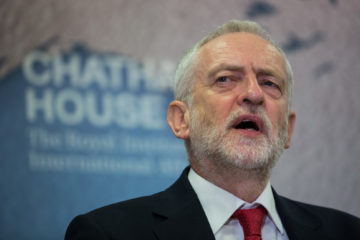Beyond the European Union: rethinking Europe’s borders
Zeigermann, The London Globalist, 2012 Publication
With the Arab spring and the current financial and economic crisis, the EU’s political, economic and cultural borders are once again shifting. Europe is facing new challenges while old problems remain unsolved. The increasing number of transnational corporations, multinational civil society movements and problems such as global warming and terrorism question the organisation of Europe’s internal and external borders. Once again, we have reached the critical point where it is necessary to ask “Quo vadis Europa?”
Europe’s changing borders
Where does Europe start and where does it end? The question about European borders is neither a new one nor is it simply a geographical problem. It was asked repeatedly since the creation of the European Community in 1957. Europe has changed a lot since then: The number of EU member states has grown from six to twenty-seven countries. In December 2011, the European Commission confirmed that Croatia has fulfilled all necessary conditions and will formally become the 28th EU member state on July 2013. This enlargement will add an additional 56,595 square kilometres and 4.4 million citizens to the European Union that covers an area of more than 4.4 million square meters already and whose population is estimated over 500 Million.
Additionally, since the Schengen Agreement of 1985 progress is being made towards eradicating internal borders and strengthening controls at external borders simultaneously. According to a European survey about cross-border mobility the principle of free movement has been a great success and among the people who are taking advantage of this right. The right to mobility has become a fundamental value within the European Union. However, the UK and Ireland are not willing to accept that principle. And even more importantly, opening the borders within the Union has lead to new challenges with regard to public security, state sovereignty, political participation, cultural identity and economic capacity.
The desire to ensure peace, stability and economic prosperity in a re-unified Europe has always been the driving force behind enlargements. Nevertheless, there were reservations when ten eastern European countries joined the EU in 2004. As former soviet states with different economic, cultural and political values, many doubted whether these countries would be able to integrate within the EU system. Furthermore, the considerable enlargement of the EU was a major challenge for the security of its borders. Many people had serious concerns about organised crime and illegal immigration from Russia, Belarus and the Ukraine through weak Eastern European borders. Control bodies such as Frontex were created but their capacity to deal with the new challenges remained uncertain, especially with regard to illegal migration.
The route of illegal immigration has shifted systematically through the Central Mediterranean to the eastern Mediterranean route. According to the European Commission, cooperation with neighbours is needed in order to tackle the problem of people smuggling. Therefore, when speaking of EU borders it is necessary to look at so-called “third-world countries” and the relationship with them. Today, the EU shares borders with 19 countries. Political cooperation, trade, cultural ties and environmental issues do not stop at legally created borders of countries. Enhancing Europe’s borders, therefore, means enhancing the number of neighbouring countries and, subsequently, the need to aid with their problems as well.
These kinds of difficulties are also a major concern with regard to the prospects for Turkey’s membership in the EU. Enlarging the EU with Turkey would mean that Europe’s borders are on the Asian continent. New neighbours such as Iraq, Iran and Syria imply a new challenge for the security of Europe. Therefore, despite Turkey’s effort for many decades to enter the EU, prospects for its membership in the EU have worsened during the last few years. In 1963, an association agreement was signed and since 2005 there have been accession negotiations between the European Union and Turkey. However, according to the Eurobarometer, the majority of the EU citizens are not in favour of a Turkish accession. And for Turkey itself it seems as if EU membership is not the focus of its foreign policy anymore.
The “Arab Spring” presents a new challenge for Europe’s borders
These problems with Europe’s changing borders are well known and widely discussed as they still represent a major concern of the EU foreign and inner policy. However, current political and economic development has added new pressing factors for Europe’s boundaries.
The turbulent events of the “Arab Spring” have alarmed the EU because of increased migration inflows. While the EU strengthened its external border control mechanisms, some member-states were not sufficiently reassured. As part of their coalition agreement, Denmark planned to build new installations on its border with Germany as a protection against smuggling, human trafficking and other brutal crimes. This initiative, however, was strongly criticized by the European Commission as it was neither justified nor compatible with the Schengen Agreement. Earlier this year, France and Italy even called for re-imposing internal border controls in order to stop refugees from North Africa. UN agencies estimate that around 50,000 migrants have arrived at the borders of Europe from North Africa since February 2011. And which is even worse, more than 1400 migrants have lost their lives in the Mediterranean Sea in the same period.
Controlling migration flows is important for socio-economic reasons, but it is doubtful that stricter border controls are an appropriate answer to the Arab Spring. From a human rights perspective, adequate mechanisms at borders are needed to ensure the protection of migrants, and to avoid unlawful expulsions. Furthermore, scholars argue that the huge amount of money spent for EU border control goes beyond the money that would be needed to integrate these migrants into the European labour market and to help people in the long run. A peaceful transition to democracy in this region should be encouraged. This would not only be a more sustainable way of coping with migration but it would also help to gradually dismantle boundaries between North Africa and Europe and to reduce the social-economic and cultural gap between the neighbouring regions. In September 2011 the EU has therefore adopted a new SPRING Programme (Support to Partnership, Reform and Inclusive Growth).
A democratic shift in these countries would have major implications for the question of the borders of the European Union. France was the driving force behind the Mediterranean Union in 2008. Further, the idea of Mediterranean countries such as Morocco joining the EU has already been introduced in the past. But even if we do not go as far as speaking of a possible EU membership or an accession to the Schengen Agreement, the Arab Spring will change Europe’s economical, cultural and political boundaries considerably and can bring people from the two continents closer together.
It is arguable that the relationship between both continents is facing new challenges as the political events of the Arab spring are happening in times of economic and financial instability of the EU. The employment situation is considered a central factor linking the current economic and financial crisis with illegal migration at the EU’s borders. While many people fled their home countries for political reasons in the first months of the Arab Spring, there were doubts about entering the EU for economic reasons. In Spain where the unemployment rate has considerably risen in the last few years (up to 21.5% in December 2011), illegal immigration has declined. According to a recent study of Frontex, many people are likely to postpone their migration decisions to Europe despite political instabilities.
Paradoxically, however, enhanced enforcement at external borders represents a disincentive to return, given the risk of a possible re-entry. Those illegal immigrants already present in the EU might foster the crisis there. Countries such as Greece and Italy which are most hit by the Eurozone crisis are those struggling most with illegal migration as well. This is why these countries do not have the necessary means to take advantage of the economic potential migrants offer and are not able to fully integrate them into the national labour market. They are heavily indebted, which makes problems with regard to European borders even worse.
As a consequence of the bad financial and economic situation of these countries, other EU member states have cast doubts on a border free Europe. Allowing a free movement of capital, labour and goods with a common currency but without a common economic regime has clearly shown the failure of governments to deal with cross-border problems, especially with regard to banks. Borders within the EU are shifting as there were many speculations about Greece leaving the Eurozone. Furthermore, other countries such as the United Kingdom are openly discussing leaving the EU. The true impact of the Eurozone crisis on Europe’s borders is not foreseeable yet. It has become clear, however, that it is necessary to speak with one voice in the EU when it comes to new challenges at its internal and external borders and that it is important to consider interests of neighbouring countries.
A shift of the EU’s political, economic and cultural borders
Europe’s borders are once again shifting due to old unsolved questions and new challenges. With a democratic transition of North African countries, the cultural and political ties of the EU and these states might become even closer. Furthermore, the economic crisis has revealed the EU’s vulnerability and dependency upon other countries and international organisations. It has also shown the dilemma of the multiple frameworks within the EU (external borders, national borders, the area under Schengen Agreement and the Eurozone).
In addition to these recent developments, climate change is seen as the major challenge of our time which will not only change Europe’s borders physically but which will also need more cross-border cooperation. Scientific scenarios show that parts of Europe, notably in the Netherlands, Denmark, Italy and Belgium, will be flooded. The effects will be physical, social and economic. Europe’s borders have started shifting already and climate change-induced migration will become a more and more important issue for the European Union. It is a global challenge that demands global answers with and beyond the EU.
The question remains if these changes of Europe’s border are for good or for bad. Are dividing lines needed inside and around Europe or can the current challenges help to overcome the paradigm of clearly defined boundaries? Maybe it is time for a broader perspective and global solutions. The EU can only develop fully if it accepts and adapts to new challenges.


